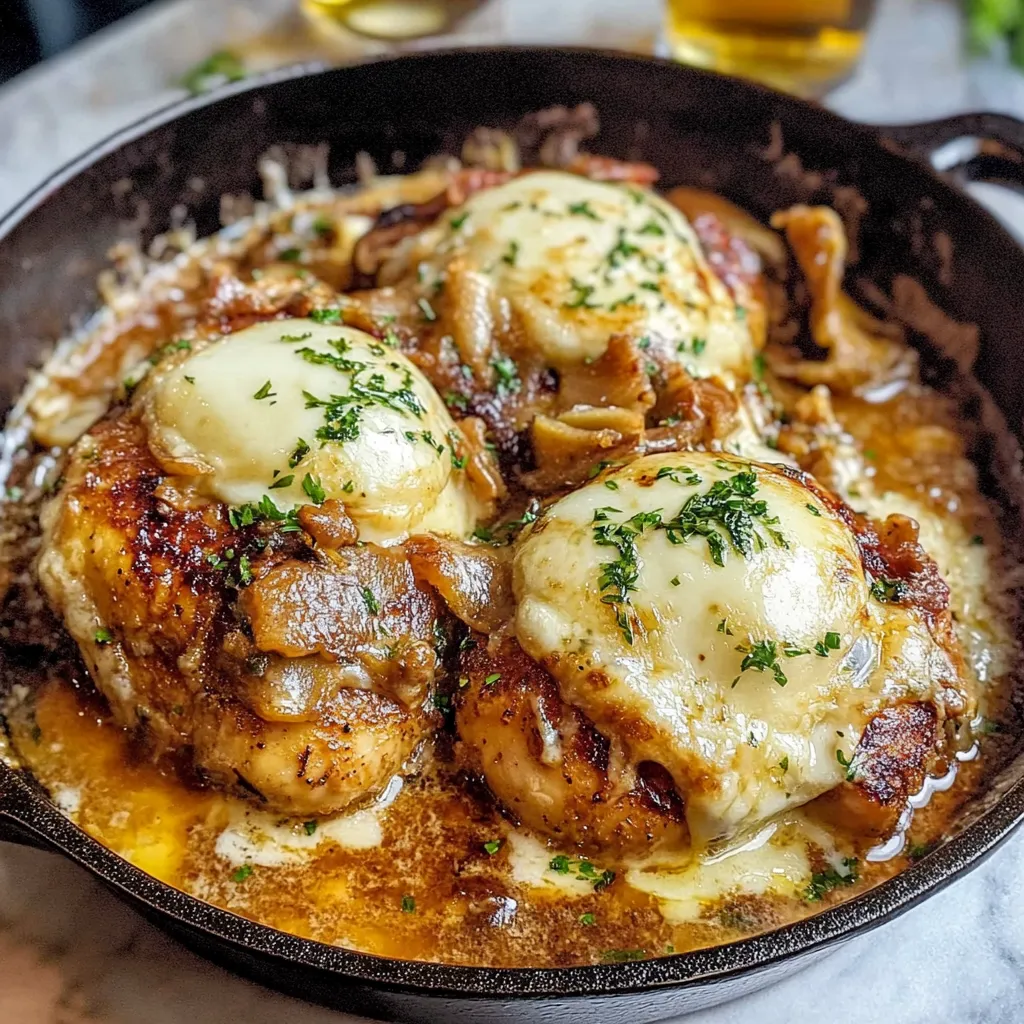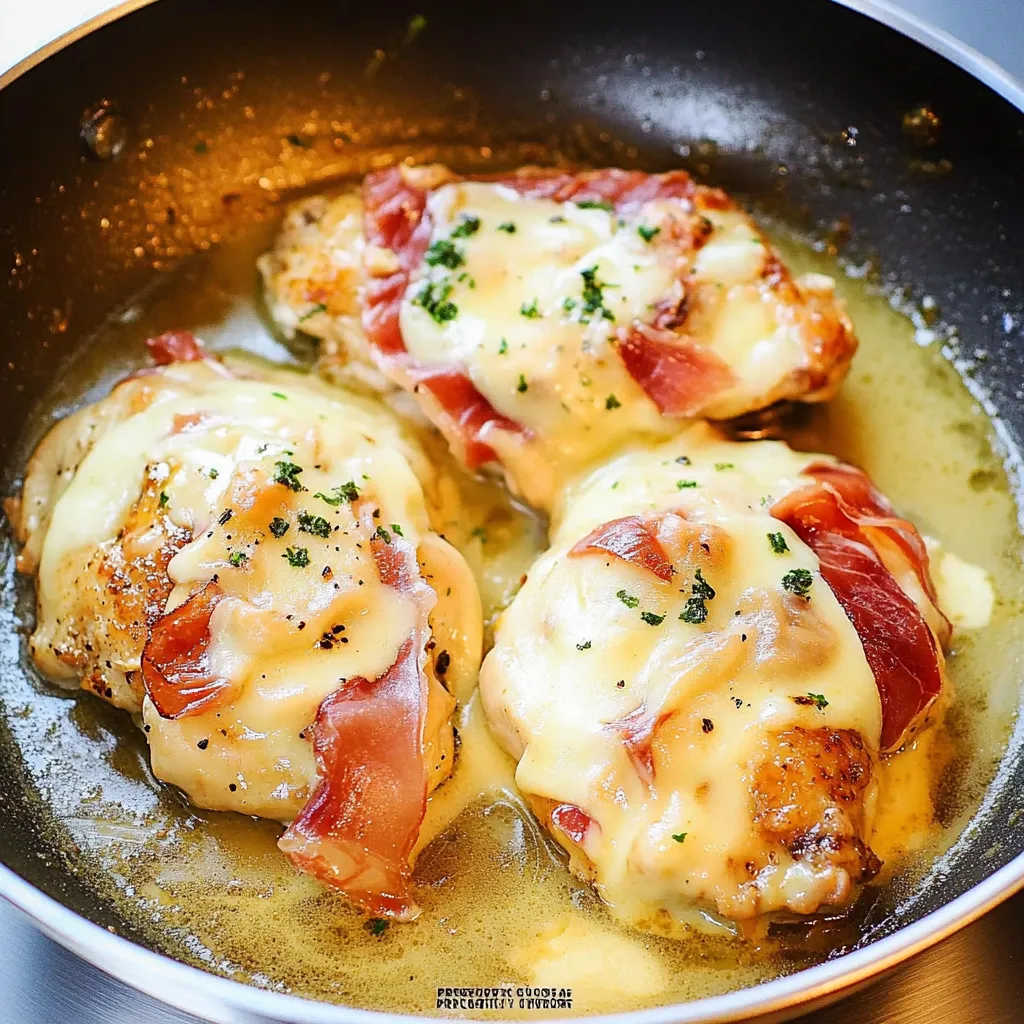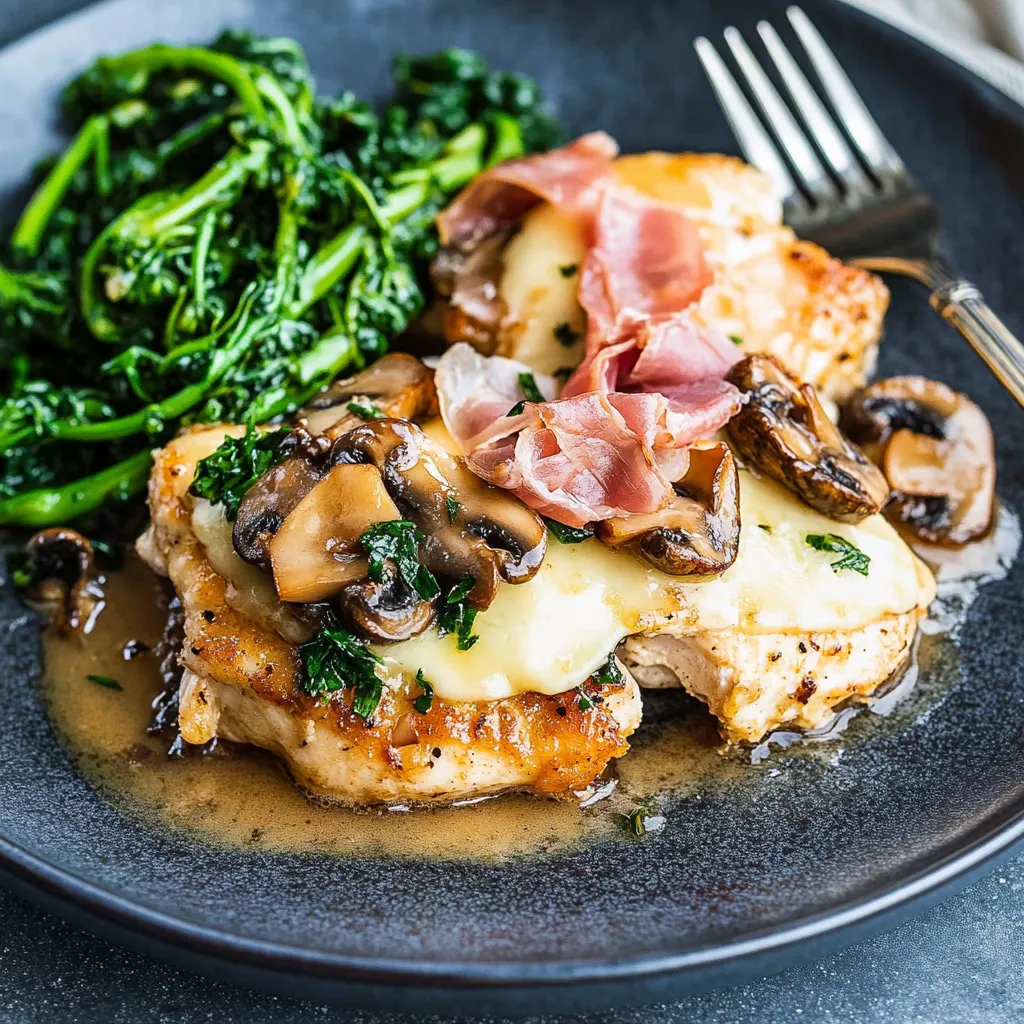 Pin it
Pin it
Transform simple chicken breasts into a sophisticated Italian masterpiece with this Chicken Valdostana. Hailing from Italy's Aosta Valley, this dish layers golden-seared chicken with earthy mushrooms, premium prosciutto, and melted Fontina cheese, all unified by a silky white wine sauce.
After years of perfecting this recipe, I've found that taking time with each step creates something truly extraordinary.
Essential Ingredients
- Even-Sized Chicken Breasts: For uniform cooking
- Quality Prosciutto: Provides perfect saltiness
- Real Fontina Cheese: Melts beautifully
- Good White Wine: Choose one you'd enjoy drinking
- Fresh Mushrooms: For earthy depth
- Fresh Thyme: Adds aromatic notes
- All-Purpose Flour: For dredging and sauce
- Unsalted Butter: Creates rich foundation
The quality of each ingredient matters here - especially the prosciutto and cheese. They're the stars that elevate this dish.
Detailed Cooking Instructions
- Step 1: Chicken Preparation
- Start with room temperature chicken breasts, pounding to even thickness. Pat dry thoroughly and season generously. Dredge in flour, shaking off excess.
- Step 2: Initial Searing
- Heat butter and oil in large ovenproof skillet. Sear chicken until golden brown, about 4-5 minutes per side. Transfer to plate.
- Step 3: Building Layers
- Sauté mushrooms until golden, building fond in pan. Create roux with butter and flour, then gradually add wine and broth for silky sauce.
 Pin it
Pin it
Storage and Make-Ahead: While best enjoyed fresh, store leftovers in an airtight container for up to three days. Reheat gently in a 350°F oven with a splash of broth to maintain sauce consistency. For planning ahead, prepare components separately and assemble just before serving.
Perfect Pairings
- Buttered pasta or risotto to soak up sauce
- Roasted fingerling potatoes
- Steamed asparagus or haricots verts
- Light mixed green salad
- Crusty Italian bread
Troubleshooting Tips
- If sauce becomes too thick, thin with warm broth.
- For uneven cheese melting, ensure cheese is room temperature before broiling.
- When chicken browns too quickly, lower heat and add splash of broth.
Temperature Mastery
- Room temperature chicken for even cooking
- Medium-high heat for proper searing
- Gentle simmer for sauce reduction
- Careful broiling for perfect cheese melt
Wine Selection Guide
- Pinot Grigio for light freshness
- Verdicchio for authentic Italian pairing
- Chardonnay for rich depth
- Soave for delicate balance
Family Style Adaptations: For casual dinners, prepare extra sauce for pasta, cut chicken into smaller portions, serve components separately, and offer extra cheese at table.
Creating Special Moments
This dish shines at intimate dinner parties or celebratory meals. Its elegant presentation and rich flavors make any occasion feel special.
Legacy of Flavor
This recipe connects us to the rich culinary traditions of Italy's Aosta Valley while remaining approachable for home cooks. It's a perfect example of how classical techniques can create memorable modern meals.
 Pin it
Pin it
The Art of Timing
Success with this dish comes from understanding the rhythm of cooking - knowing when to be patient and when to move quickly. It's this dance of timing that transforms good ingredients into an exceptional meal.
Final Thoughts
Chicken Valdostana represents the best of Italian cuisine - simple ingredients transformed through careful technique into something extraordinary. Each time I prepare it, I'm reminded that great cooking is about patience, quality ingredients, and attention to detail.
Frequently Asked Questions
- → Can I use a different cheese?
- Yes, while fontina is traditional, gruyere or mozzarella work well too.
- → What wine works best for the sauce?
- Use a dry white wine like Pinot Grigio or Sauvignon Blanc that you'd enjoy drinking.
- → Can I prepare this in advance?
- Prepare everything except the cheese topping, then broil with cheese just before serving.
- → What sides go well with this?
- Pasta, risotto, or roasted potatoes are perfect for soaking up the delicious sauce.
- → Can I skip the mushrooms?
- Yes, you can omit them or replace with other vegetables like asparagus.
